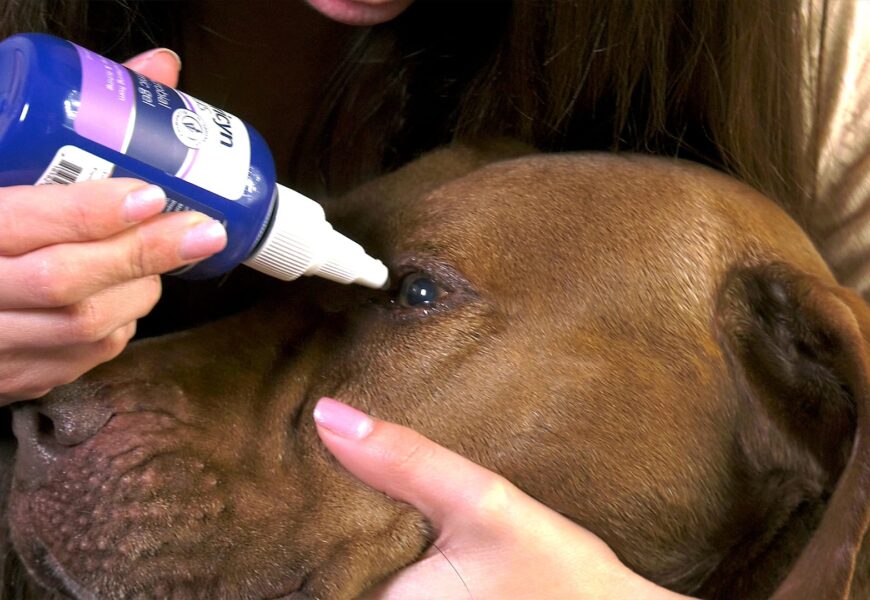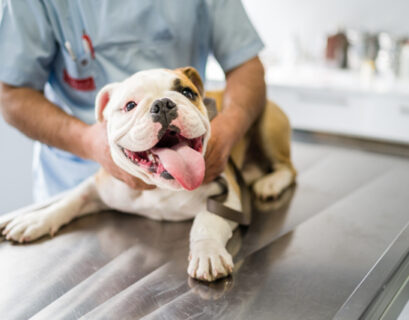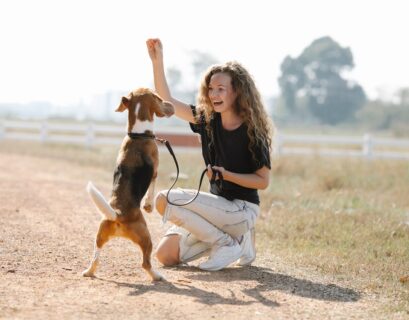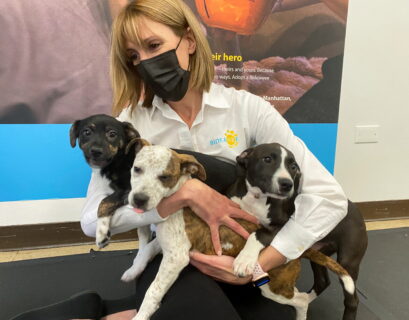The Secrets to a Happy, Healthy Pet: The Power of Pet Grooming and Hygiene.
Key Takeaways:
- Pet grooming is vital for your pet’s health and appearance.
- Regular grooming prevents skin conditions, parasites, and matting in their coat.
- Grooming strengthens your bond and reduces stress for both you and your pet.
- Essential practices include brushing, bathing, nail trimming, and ear and eye cleaning.
- Different pets have unique grooming needs; tailor care accordingly.
- Choose reputable groomers for expert and stress-free care.
- Dental care is crucial for preventing dental issues and maintaining overall health.
- Keep your pet’s living environment clean and dispose of waste responsibly.
- Address common challenges with sensitivity, like allergies and fear.
- Choose pet-safe and eco-friendly grooming products for their safety.
As the sun rises and sets, a timeless bond thrives between pet owners and their beloved furry companions. Our pets, whether dogs, cats, or small critters, bring endless joy, comfort, and companionship. In return, our responsibility as pet parents is to ensure their well-being, including pet grooming and hygiene.
Beyond mere aesthetics, pet grooming plays a profound role in preserving our four-legged friends’ overall health and happiness. From promoting physical wellness to nurturing emotional stability, maintaining a regular grooming routine is a labor of love that yields numerous rewards.
Join us as we delve into pet grooming and hygiene, exploring the significance of this age-old practice in our modern-day lives. From the therapeutic touch of brushing to the calming effect of a clean environment, we embark on a journey to understand the profound impact of grooming on our pets’ lives.
Throughout this exploration, we will uncover the practical benefits of regular grooming, such as warding off skin conditions, preventing pesky parasites, and reducing the risk of matting and tangles. But it doesn’t end there—beneath the surface, grooming nurtures a pet’s psychological well-being, fostering a stronger bond with their owners and alleviating stress and anxiety.
We will navigate the nuances of grooming for different pets, understanding the unique needs of dogs, cats, and small animals. As we unveil the secrets of maintaining various coat types and handling delicate paws, we discover the art of gentle grooming that speaks to the hearts of our furry companions.
Moreover, we explore professional pet groomers’ roles and expertise in elevating the grooming experience. From choosing the right groomer to embracing grooming etiquette, we learn how to pamper our pets while ensuring their safety and comfort.
Beyond the brush and shampoo, we delve into pet hygiene, exploring the importance of dental care and oral hygiene. From brushing their teeth to maintaining a clean living environment, we unlock the secrets to a happy and healthy pet lifestyle.
Yet, every grooming journey comes with its own set of challenges. Fear not, for we address common obstacles with compassion and care. Whether dealing with allergies or calming an anxious pet during grooming sessions, our guide seeks to make grooming a positive experience for pets and owners alike.
The Importance of Regular Pet Grooming: Promoting Physical Health and Psychological Wellbeing

As pet owners, it is our joy and responsibility to provide our furry companions with the utmost care and attention. Regular grooming is essential to responsible pet ownership, which goes beyond merely keeping our pets looking tidy and presentable. In this article, we delve into the significance of regular pet grooming, focusing on how it promotes our beloved four-legged friends’ physical and psychological well-being.
Promoting Physical Health and Wellness
Preventing Skin Conditions and Parasites
Regular grooming sessions serve as a frontline defense against various skin conditions and pesky parasites that can plague our pets. Brushing and combing not only help to remove loose fur and dirt but also distribute natural oils throughout the coat, keeping the skin moisturized and healthy. Additionally, by using these grooming techniques, pet owners can spot any unusual lumps, bumps, or skin irritations so that a veterinarian can treat them immediately. Furthermore, grooming presents an excellent opportunity to check for fleas, ticks, and other external parasites, preventing infestations and the potential transmission of diseases.
Reducing the Risk of Matting and Tangles
Matting and tangles can be common and uncomfortable for pets with long or dense coats. For pets with long or dense coats, regular brushing helps prevent these problems by removing knots and preventing them from forming in the first place. Matting can be particularly problematic as it can pull on the skin, causing discomfort and even leading to skin infections. By incorporating regular grooming into our pet’s routine, we ensure that their coat remains free from tangles, promoting better airflow to the skin and reducing the likelihood of skin-related problems.
Enhancing the Pet’s Psychological well-being
Strengthening the Owner-Pet Relationship
The grooming process is not solely about maintaining cleanliness; it is also a precious opportunity to bond with our pets. The act of grooming involves physical contact, providing a chance for pet owners to express their affection and care. Trust and security are fostered as pets are showered with gentle strokes and soothing words during grooming. This strengthening of the owner-pet relationship is especially vital for recently adopted pets or those who have experienced trauma, as grooming can help them feel safe and loved in their new home.
Reducing Stress and Anxiety in Pets
Just like humans, pets can experience stress and anxiety. Grooming can be an inherently calming activity when done gently and patiently. Regular grooming sessions, especially when introduced gradually and positively reinforced, can help pets associate the experience with relaxation rather than stress. The tactile stimulation during grooming releases endorphins, the “feel-good” hormones, in pets, further enhancing their emotional wellbeing. Moreover, for social animals like dogs and cats, the act of grooming mimics the grooming behavior they would experience in their natural social groups, providing a sense of comfort and familiarity.
Essential Pet Grooming Practices: Keeping Your Furry Friend Fresh and Happy
As pet owners, ensuring the wellbeing of our beloved companions is at the top of our priority list. Regular grooming is an essential aspect of responsible pet care beyond appearances—it is a fundamental part of keeping our pets healthy and content. In this comprehensive guide, we will explore the essential pet grooming practices that every pet owner should incorporate into their routine. From brushing and bathing to nail trimming and ear cleaning, we will uncover the best techniques and tips to keep our furry friends looking and feeling their best.
Brushing and Combing Your Pet’s Coat
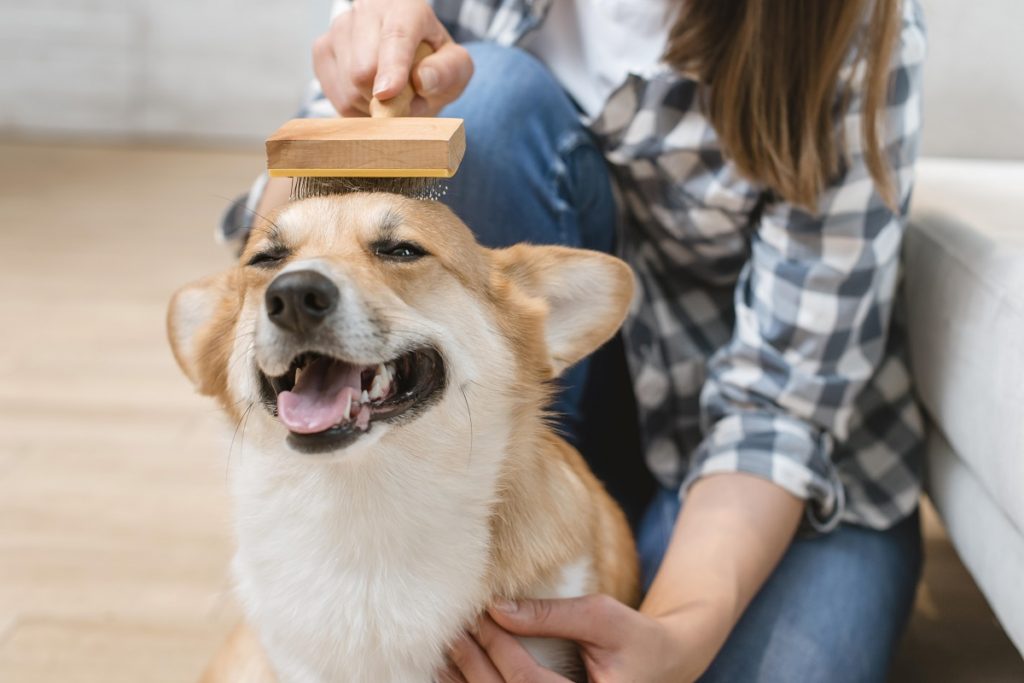
Tailoring Grooming to Different Coat Types
Understanding the unique characteristics of your pet’s coat is crucial to tailoring an effective grooming routine. Pets with different coat types require specific grooming practices. For example, long-haired breeds may need daily brushing to prevent mats and tangles, while short-haired breeds may benefit from weekly grooming to reduce shedding and maintain a sleek appearance.
Pay attention to the specific needs of your pet’s coat, and invest in high-quality grooming tools appropriate for their fur type. Regular brushing not only keeps their coat in top condition but also serves as a bonding experience between you and your pet.
Tips for Proper Brushing Techniques
When brushing your pet, use gentle and smooth strokes to avoid causing discomfort or pulling on their fur. Start from the top of the head and work your way down to their tail, ensuring you cover all areas of their body. Take your time and be patient, especially if your pet is new to grooming or has a sensitive disposition.
For pets with thick undercoats, consider using a de-shedding tool to remove loose fur effectively. Always reward your pet with praise or treats after each grooming session to create a positive association with the experience.
Bathing Your Pet
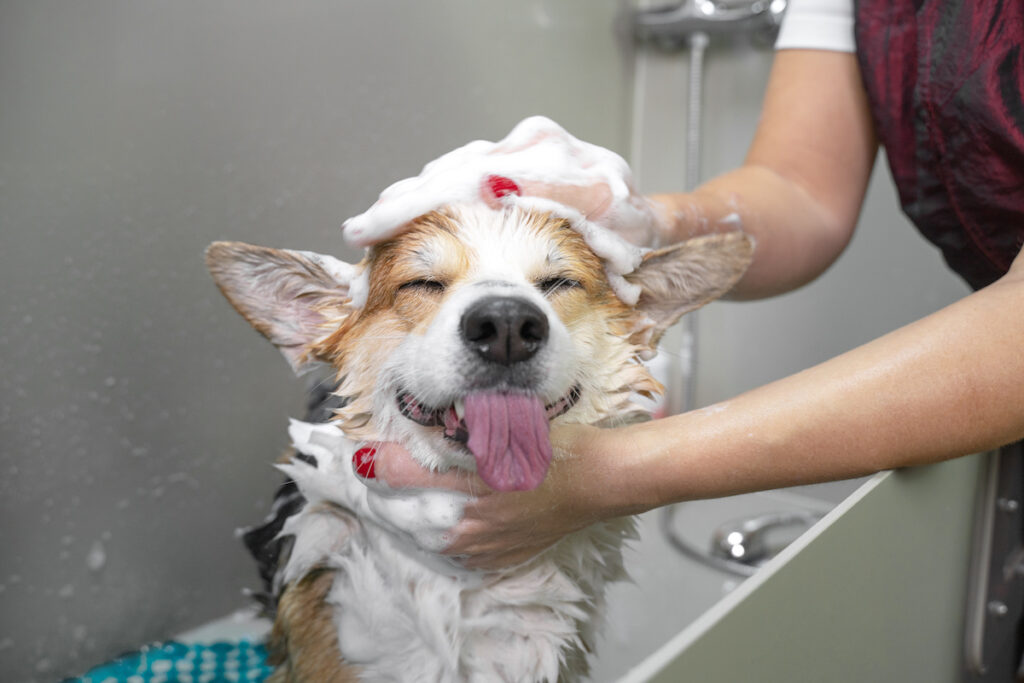
Choosing the Right Pet Shampoo and Conditioner
When it comes to bathing your pet, selecting the right shampoo and conditioner is crucial. Avoid using human products, as they may contain ingredients that could be harmful to your pet’s skin. Instead, opt for mild and hypoallergenic pet shampoos and conditioners that cater to their specific needs, such as products designed for sensitive skin or medicated shampoos for addressing skin issues.
Prior to bathing, brush your pet’s coat to remove any tangles or loose fur, and place a non-slip mat in the bathtub to ensure their safety during the bathing process.
Bathing Frequency and Tips for Stress-Free Baths
The frequency of baths depends on your pet’s individual needs and lifestyle. While some dogs may require monthly baths, others can go longer without a bath. Over-bathing can strip the skin of its natural oils, leading to dryness and irritation. On the other hand, under-bathing can result in an unpleasant odor and an unclean coat.
Make bath time enjoyable for your pet by using warm water and speaking soothingly throughout the process. Avoid spraying water directly into their eyes and ears, and be sure to rinse thoroughly to remove all traces of shampoo and conditioner.
Nail Trimming and Paw Care
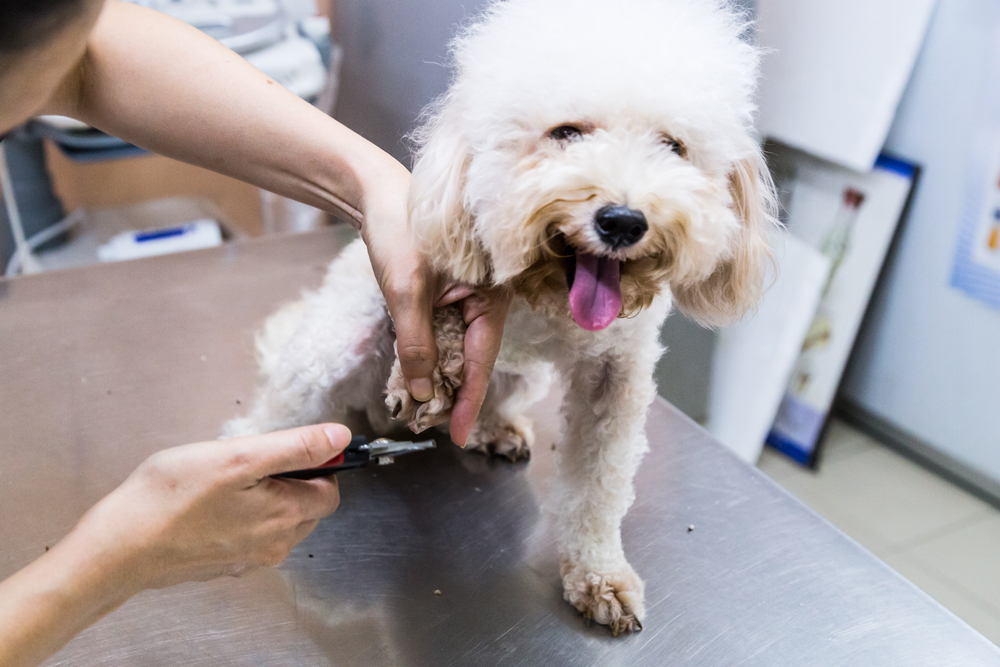
Importance of Regular Nail Maintenance
Keeping your pet’s nails at an appropriate length is vital for their comfort and mobility. Overgrown nails can cause pain and difficulty walking, as well as potential joint and posture issues. Regular nail maintenance is essential, especially if your pet does not naturally wear down their nails through regular activity on hard surfaces.
Safely Trimming Your Pet’s Nails
Nail trimming can be intimidating for both pet owners and pets alike, but with patience and practice, it can become a stress-free routine. Use a sharp and appropriate-sized nail clipper designed for pets, and be cautious not to cut too close to the quick—the sensitive area containing blood vessels and nerves.
If you need more clarification on trimming your pet’s nails, consult with a professional groomer or veterinarian to learn the proper technique.
Cleaning Your Pet’s Ears and Eyes
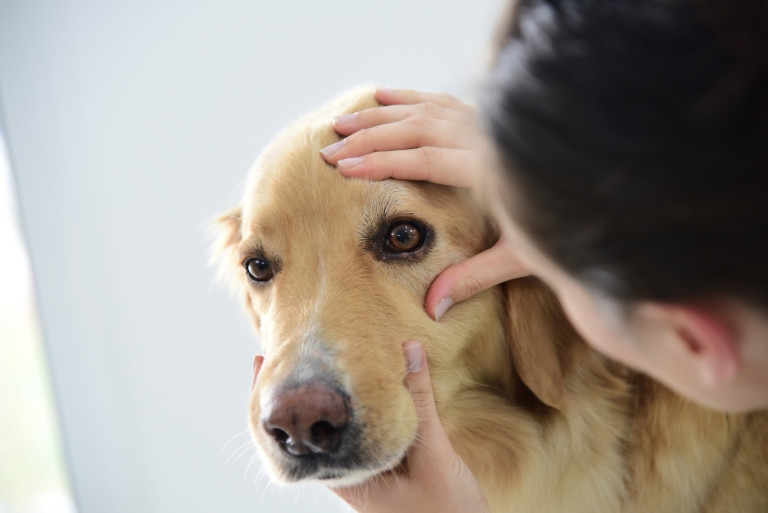
Preventing Ear Infections and Irritations
Regular ear cleaning is essential to preventing ear infections and discomfort for your pet. Use a veterinarian-recommended ear cleaner and gently wipe the visible parts of the ear with a soft cloth or cotton ball. Never insert anything into the ear canal, as it can cause harm and push debris deeper into the ear.
If you notice any signs of an ear infection, such as redness, swelling, or an unpleasant odor, seek veterinary advice promptly.
Proper Eye Cleaning Techniques
Cleaning your pet’s eyes can help prevent tear stains, crust buildup, and eye infections. Use a clean, damp cloth or a cotton ball moistened with warm water to gently wipe around your pet’s eyes. Be sure to use a different part of the cloth or cotton ball for each eye to avoid spreading any potential infection.
If your pet frequently suffers from eye discharge or irritation, consult your veterinarian to rule out any underlying health issues.
In conclusion, essential pet grooming practices are essential in maintaining the health and happiness of our furry companions. Regular brushing and combing tailored to their specific coat types keep their fur in pristine condition and provide valuable bonding moments. Bathing your pet with the right products and frequency ensures their coat and skin stay clean and healthy, while nail trimming and paw care promote comfort and mobility.
Lastly, regular cleaning of your pet’s ears and eyes prevents potential infections and irritations, ensuring their overall wellbeing. By incorporating these grooming practices into your pet care routine, you contribute to the physical and emotional health of your beloved furry friend, fostering a strong and loving bond that will last a lifetime.
Grooming for Specific Pets: Tailoring Care for Dogs, Cats, and Small Pets
As pet owners, we cherish the unique qualities and characteristics of each animal that becomes a part of our family. Just as their personalities differ, so do their grooming needs. Understanding and catering to the specific grooming requirements of different pets are essential aspects of responsible pet care. In this comprehensive guide, we will explore grooming tips tailored to dogs, cats, and small pets, ensuring that each furry friend receives the attention and care they deserve.
Dog Grooming Tips
Grooming Needs for Different Dog Breeds
Dogs come in various shapes, sizes, and coat types, and their grooming needs can vary significantly. Short-haired breeds like Beagles or Boxers typically require minimal grooming, while long-haired breeds like Shih Tzus or Collies may need daily brushing to prevent matting and tangles. Medium-haired breeds like Golden Retrievers or Cocker Spaniels may benefit from regular brushing to control shedding.
Some dog breeds have specific grooming requirements due to their unique characteristics. For example, Poodles and Bichon Frises have continuously growing hair that requires regular professional grooming to maintain their signature looks. Breeds with folded or wrinkled skin, like Bulldogs or Shar-Peis, need special attention to keep their skin clean and free from irritation.
Understanding your dog’s breed and coat type will guide you in establishing an appropriate grooming routine that addresses their individual needs.
Special Considerations for Long-Haired Dogs
Long-haired dogs require extra care to keep their coats in optimal condition. Regular brushing is crucial to prevent mats and tangles, which can be painful and lead to skin problems. Use a high-quality slicker brush or a de-shedding tool to remove loose fur and prevent shedding.
Bathing long-haired dogs should be done as needed, typically every four to six weeks, using a mild dog shampoo and conditioner. Be sure to thoroughly dry their coat after bathing to avoid dampness, which can lead to matting.
In addition to coat care, pay attention to other grooming aspects, such as dental hygiene, nail trimming, and ear cleaning, to maintain your long-haired companion’s overall health and happiness.
Cat Grooming Tips
Understanding Cats’ Self-Grooming Habits
Cats are famously meticulous groomers, spending a significant portion of their day cleaning themselves. While they are generally efficient at grooming, they may need assistance in certain situations. For instance, elderly or overweight cats may have difficulty reaching certain areas of their bodies, or long-haired cats may struggle with excessive shedding and hairballs.
Observe your cat’s grooming habits and look out for any changes in their grooming behavior, as it could be a sign of an underlying health issue that requires veterinary attention.
Assisting with Cat Grooming and Preventing Hairballs
To assist your cat with grooming, you can use a soft brush to remove loose fur and reduce shedding. This is especially important during shedding seasons, such as spring and fall. Be gentle and patient, as some cats may be sensitive to being groomed.
Hairballs are a common issue in long-haired cats, as they ingest fur during grooming. To help prevent hairballs, consider using cat-specific hairball prevention products or providing specialized cat food that aids in hairball elimination. Regular brushing also helps to reduce the amount of fur your cat ingests while grooming.
Additionally, keeping your cat’s environment clean and dust-free can minimize the amount of fur they inhale while self-grooming.
Grooming Small Pets (Rabbits, Guinea Pigs, etc.)
Handling and Grooming Delicate Small Pets
Small pets, such as rabbits, guinea pigs, and hamsters, require gentle handling and special grooming care. While some of these animals groom themselves, they may need assistance in maintaining their hygiene.
For small pets with longer fur, regular brushing is essential to prevent matting and reduce shedding. Use a soft brush or a grooming comb suitable for their fur type, and be gentle to avoid causing stress or discomfort.
For short-haired small pets, such as guinea pigs or mice, brushing may not be necessary, but regular checks for any signs of skin irritation or parasites are crucial for their health.
Dental Care for Small Pets
Dental health is a critical aspect of caring for small pets. Many small animals have continuously growing teeth, which can lead to dental problems if not properly maintained.
Provide your small pet with appropriate chew toys or wooden blocks to keep their teeth properly worn down. Additionally, ensure their diet includes a balanced mix of hay, pellets, and fresh vegetables to support dental health.
Avoid sugary treats and sticky foods that can cause tooth decay, and schedule regular veterinary check-ups to monitor your small pet’s dental health.
Professional Pet Grooming Services: Expert Care for Your Furry Friend
As responsible pet owners, we strive to provide the best care and attention to our beloved companions. While regular grooming at home is essential, seeking professional pet grooming services can offer additional benefits that enhance your pet’s overall health and appearance. In this comprehensive guide, we explore the advantages of professional grooming, how to choose a reputable pet groomer, and the importance of understanding grooming etiquette and requests. Let’s delve into the world of professional pet grooming and discover how it can elevate your pet’s grooming experience to a new level of excellence.
Benefits of Seeking Professional Grooming Services
Expert Handling and Specialized Techniques
Professional pet groomers are trained and experienced in handling animals of various breeds and temperaments. Their expertise allows them to employ specialized grooming techniques tailored to your pet’s specific needs. From the gentlest touch for sensitive pets to specific grooming styles for different breeds, professional groomers possess the skills and knowledge to ensure your furry friend receives the best care.
Comprehensive Grooming Services
Beyond the basics of brushing and bathing, professional pet groomers offer a range of comprehensive services. These may include nail trimming, ear cleaning, teeth brushing, and even specific treatments for skin and coat conditions. Opting for professional grooming ensures that all aspects of your pet’s grooming needs are addressed with the utmost attention to detail.
Early Detection of Health Issues
During a professional grooming session, groomers have the opportunity to closely examine your pet’s skin, coat, ears, and eyes. Their trained eyes can spot any signs of skin irritations, lumps, or abnormalities that may require veterinary attention. Early detection of health issues can lead to prompt treatment and the prevention of potential complications, contributing to your pet’s overall wellbeing.
Stress-Free Grooming Environment
Professional grooming facilities are designed to provide a stress-free and safe environment for pets. These establishments are equipped with grooming tables, appropriate bathing areas, and tools to cater to various pet sizes and breeds. The calm and controlled environment helps reduce the anxiety that some pets may experience during grooming, resulting in a more pleasant and positive experience for your furry companion.
How to Choose a Reputable Pet Groomer
Research and Reviews
Start by researching local pet groomers and reading reviews from their previous clients. Look for groomers with a positive reputation and a track record of satisfied customers. Ask for recommendations from fellow pet owners or your veterinarian for trusted groomers in your are
Visit the Grooming Facility
Before booking an appointment, visit the grooming facility in person. Ensure that it is clean, well-maintained, and equipped with the necessary tools and equipment. A reputable groomer will be happy to give you a tour of their facility and answer any questions you may have.
Check for Certifications and Training
Inquire about the groomer’s certifications and training. Professional groomers often undergo formal training and may hold certifications from grooming schools or organizations. Choosing a groomer with the appropriate qualifications provides peace of mind that your pet is in capable hands.
Personalized Consultation
A reputable groomer will conduct a personalized consultation before each grooming session. They will discuss your pet’s specific needs, any health concerns, and your grooming preferences. This consultation ensures that the grooming experience is tailored to your pet’s individual requirements.
Understanding Grooming Etiquette and Requests
Communication with the Groomer
Effective communication with the groomer is vital for a successful grooming experience. Be sure to inform them of any allergies, sensitivities, or behavioral issues your pet may have. Additionally, discuss your preferences for the grooming style and any specific requests you may have.
Regular Grooming Schedule
Maintain a regular grooming schedule for your pet. The frequency of grooming appointments may vary based on your pet’s breed, coat type, and lifestyle. Consistency in grooming sessions ensures that your pet’s coat and skin remain healthy and well-maintained.
Patience and Positive Reinforcement
Grooming sessions may be unfamiliar or even intimidating for some pets, especially if they are new to the experience. Patience and positive reinforcement during grooming can help alleviate stress and build trust between your pet and the groomer. Reward your pet with treats or praise for their cooperation and good behavior during the grooming process.
Pet Hygiene Beyond Grooming: Ensuring Your Pet’s Dental Health and Clean Living Environment
As pet owners, we strive to provide the best care for our furry companions, and that goes beyond just grooming. Pet hygiene plays a crucial role in maintaining their overall health and wellbeing. In this comprehensive guide, we explore the importance of dental care and oral hygiene for pets, along wi andficance of maintaining a clean living environment. Let’s dive into the world of pet hygiene beyond grooming and discover how these practices contribute to a happy and healthy life for your beloved pets.
Dental Care and Oral Hygiene for Pets
Importance of Regular Teeth Cleaning
Just like humans, pets can suffer from dental issues if their teeth are not properly cared for. Dental problems in pets can range from bad breath and plaque buildup to more severe issues like gum disease and tooth decay. Regular teeth cleaning is essential to prevent these problems and promote good oral health for your furry friend.
Proper dental care not only maintains healthy teeth but also has a positive impact on your pet’s overall wellbeing. Dental issues can cause pain and discomfort, affecting their ability to eat and play. Neglecting oral hygiene can also lead to bacterial infections that may spread to other parts of the body, impacting the immune system and overall health.
Tips for Brushing Your Pet’s Teeth
While brushing your pet’s teeth may not be their favorite activity, with patience and positive reinforcement, it can become a routine part of their care. Here are some tips for successful tooth brushing:
Start slowly and introduce toothbrushing gradually. Use a soft-bristled toothbrush specifically designed for pets and pet-friendly toothpaste. Avoid using human toothpaste, as it may contain ingredients that are harmful to animals.
Allow your pet to get used to the taste of the toothpaste by letting them lick a small amount from your finger.
Gently lift your pet’s lips to expose their teeth and gums. Brush in gentle, circular motions, focusing on the outer surfaces of the teeth.
Be patient, and reward your pet with praise and treats after each successful brushing session. Positive reinforcement will create a positive association with teeth cleaning.
Aim to brush your pet’s teeth at least two to three times a week. Regularity is key to maintaining their dental health.
Maintaining a Clean Pet Living Environment
Regularly Cleaning Pet Bedding and Toys
A clean living environment is essential for your pet’s hygiene and overall health. Regularly washing their bedding, blankets, and toys helps to remove dirt, bacteria, and odors that can accumulate over time.
Machine wash pet bedding and blankets on a regular basis, using pet-safe detergent. Ensure that the bedding is completely dry before returning it to your pet’s resting area to prevent dampness and mold growth.
Clean your pet’s toys with pet-friendly disinfectants or soap and water. Soft toys can often be machine washed, while hard toys can be scrubbed with a brush.
Proper Disposal of Pet Waste
Responsible waste management is essential for maintaining a clean living environment for both pets and their owners. When taking your pet for walks, always carry waste bags to pick up after them. Properly dispose of the waste in designated receptacles.
In your home, clean up your pet’s waste in the yard promptly to prevent the spread of parasites and bacteria. Regularly disinfect areas where your pet frequents to keep your living space clean and free from potential health hazards.
Addressing Common Pet Grooming Challenges: Nurturing Your Furry Friend with Sensitivity and Care
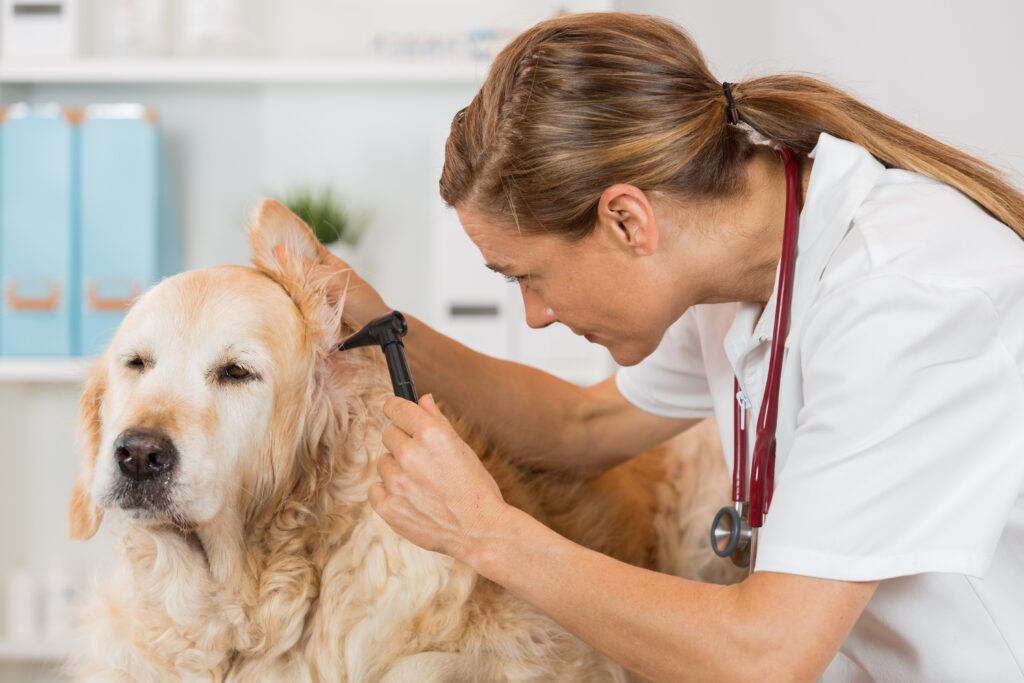
Pet grooming is an essential part of responsible pet care, but it can come with its own set of challenges. As pet owners, it is crucial to address these challenges with empathy and understanding, ensuring that our furry friends have a positive and stress-free grooming experience. In this comprehensive guide, we explore common pet grooming challenges, including dealing with pet allergies or sensitivities, handling fear and anxiety during grooming sessions, and grooming senior pets and pets with mobility issues. Let’s delve into the world of compassionate pet grooming and discover how we can make the grooming process a comfortable and enjoyable time for our beloved companions.
Dealing with Pet Allergies or Sensitivities
Just like humans, pets can suffer from allergies or sensitivities to certain grooming products or procedures. Common grooming products, such as shampoos and conditioners, may contain ingredients that can trigger allergic reactions in some pets. Signs of pet allergies may include excessive scratching, redness or irritation of the skin, and persistent licking or chewing.
To address pet allergies or sensitivities during grooming:
Choose Hypoallergenic Products: Opt for hypoallergenic grooming products specifically formulated for sensitive pets. These products are often free from harsh chemicals and fragrances that can cause irritation.
Conduct Patch Tests: Before using a new grooming product on your pet, conduct a patch test on a small area of their skin. Observe the area for any signs of allergic reactions before applying the product to their entire body.
Consult with a Veterinarian: If your pet exhibits signs of allergies, consult with your veterinarian to determine the cause and receive appropriate treatment or alternative grooming product recommendations.
Handling Fear and Anxiety during Grooming Sessions
Fear and anxiety can be common reactions in some pets during grooming sessions. Loud noises from grooming tools, the presence of strangers, or previous negative experiences can all contribute to your pet’s unease.
To help your pet feel more comfortable during grooming:
Gradual Desensitization: Introduce grooming tools and equipment gradually to your pet in a positive and non-threatening manner. Allow them to sniff and explore the tools before using them for grooming.
Positive Reinforcement: Use treats and verbal praise to reward your pet for staying calm and cooperative during grooming sessions. Positive reinforcement creates a positive association with grooming and reduces fear and anxiety.
Seek Professional Help: If your pet’s fear and anxiety persist, consider seeking the assistance of a professional animal behaviorist or trainer experienced in working with fearful pets.
Grooming Senior Pets and Pets with Mobility Issues
As pets age, they may experience mobility issues, joint pain, or other health conditions that make grooming more challenging. Additionally, some pets may have limited mobility due to disabilities or injuries.
To groom senior pets or pets with mobility issues with care:
Comfortable Environment: Create a calm and comfortable grooming environment for your pet. Use soft bedding and ensure that the grooming area is easily accessible to them.
Gentle Handling: Be gentle and patient when grooming senior pets or pets with mobility issues. Avoid putting unnecessary pressure on their joints or sensitive areas.
Shorter Grooming Sessions: Consider breaking grooming sessions into shorter, more manageable intervals to reduce stress and strain on your pet.
Seek Professional Assistance: If your pet’s mobility issues make grooming challenging, consider seeking the help of a professional groomer who is experienced in working with senior pets or pets with special needs.
Pet Grooming and Hygiene Products: A Comprehensive Guide to Tools, Accessories, and Safety
As responsible pet owners, we want the best for our furry companions, including their grooming and hygiene needs. Choosing the right pet grooming products is essential to ensure that our pets receive the care they deserve. In this comprehensive guide, we will explore the various grooming tools and accessories available for pet care and delve into the importance of understanding grooming product ingredients and safety. Let’s embark on a journey to discover the world of pet grooming and hygiene products, empowering us to make informed decisions for the wellbeing of our cherished pets.
Exploring Grooming Tools and Accessories
Grooming Brushes and Combs
Grooming brushes and combs are essential for maintaining your pet’s coat health and appearance. Different coat types require specific brushes and combs, so choosing the right ones for your pet is essential. Slicker brushes are ideal for removing loose fur and preventing matting in long-haired breeds, while rubber brushes work well for short-haired pets and help to massage the skin.
Combs, on the other hand, are useful for detangling and smoothing the fur. Choose wide-toothed combs for long-haired pets and fine-toothed combs for short-haired ones. Regular brushing and combing sessions keep your pet’s coat tidy and promote bonding and stimulate blood circulation in their skin.
Pet Shampoos and Conditioners
Pet shampoos and conditioners are vital to maintaining your pet’s cleanliness and hygiene. Avoid using human products, as they may contain harsh chemicals that can irritate your pet’s skin. Instead, opt for pet-specific shampoos and conditioners to suit your pet’s coat type and skin sensitivity.
Hypoallergenic shampoos are suitable for pets with sensitive skin, while medicated shampoos can address specific skin conditions. Always follow the instructions on the product label and rinse thoroughly to remove all shampoo and conditioner traces from your pet’s fur.
Nail Trimmers and Grinders
Keeping your pet’s nails at an appropriate length is crucial for their comfort and mobility. Nail trimmers and grinders are used to safely and effectively trim your pet’s nails.
Choose the appropriate size of nail trimmer based on your pet’s size and nail thickness. Guillotine trimmers work well for small pets, while scissor-type trimmers are suitable for larger breeds. If you need more clarification about trimming your pet’s nails, consult a professional groomer or veterinarian for guidance.
Ear Cleaners and Eye Wipes
Regularly cleaning your pet’s ears and eyes is essential for preventing infections and irritations. Ear cleaners and eye wipes designed specifically for pets can help keep these areas clean and debris-free.
Use a veterinarian-recommended ear cleaner and follow the instructions for safe and gentle ear cleaning. For eye cleaning, use a separate moistened cotton ball or wipe for each eye to avoid spreading any potential infection.
Understanding Grooming Product Ingredients and Safety
Reading Product Labels
When choosing grooming products for your pet, reading and understanding the product labels is essential. Look for clear ingredient lists and avoid products that contain potentially harmful chemicals, artificial fragrances, or dyes.
Research unfamiliar ingredients and consult your veterinarian for any concerns about specific product components. Additionally, check for information on the product’s suitability for your pet’s age, size, and coat type.
Allergies and Sensitivities
Like humans, pets can have allergies or sensitivities to certain ingredients in grooming products. Watch for any adverse reactions after using a new product and discontinue its use if your pet shows signs of irritation or discomfort.
If your pet has a history of allergies, consider using hypoallergenic or natural grooming products that are less likely to cause allergic reactions.
Pet-Safe and Eco-Friendly Products
Choosing pet-safe and eco-friendly grooming products is not only for your pet but also for the environment. Opt for products free from harmful chemicals, biodegradable, and cruelty-free.
Consider using products with sustainable packaging to reduce your carbon footprint and contribute to a healthier planet for all living beings.
Conclusion
Proper pet grooming and hygiene are vital in maintaining our beloved companions’ overall health and well-being. Beyond aesthetics, grooming is fundamental to responsible pet ownership, ensuring that our pets lead happy and comfortable lives. Regular grooming routines keep our furry friends looking their best and contribute significantly to their physical and emotional health.
A well-groomed pet is happy, evident in their demeanor and interactions with their owners and other animals. Grooming sessions provide excellent opportunities for pet owners to bond with their pets and reinforce the sense of trust and affection between them. Moreover, a clean and well-maintained pet is less prone to health issues, making regular grooming an essential preventive measure.
Responsible pet owners must ensure our pets receive proper grooming and hygiene care. Regular brushing, bathing, nail trimming, and other grooming practices should be integrated into our pet’s routine from an early age. Additionally, understanding the specific needs and preferences of our pets’ breeds or species will enable us to tailor grooming practices accordingly, promoting a positive grooming experience.
Pet grooming and hygiene not only impact the physical appearance of our pets but also contribute to their overall health and happiness. Regular grooming routines can prevent skin problems, infections, and behavioral issues while strengthening the bond between pets and their owners. As we embrace the rewarding journey of pet ownership, let us always remember that a clean and well-groomed pet is a happy and healthy pet.

